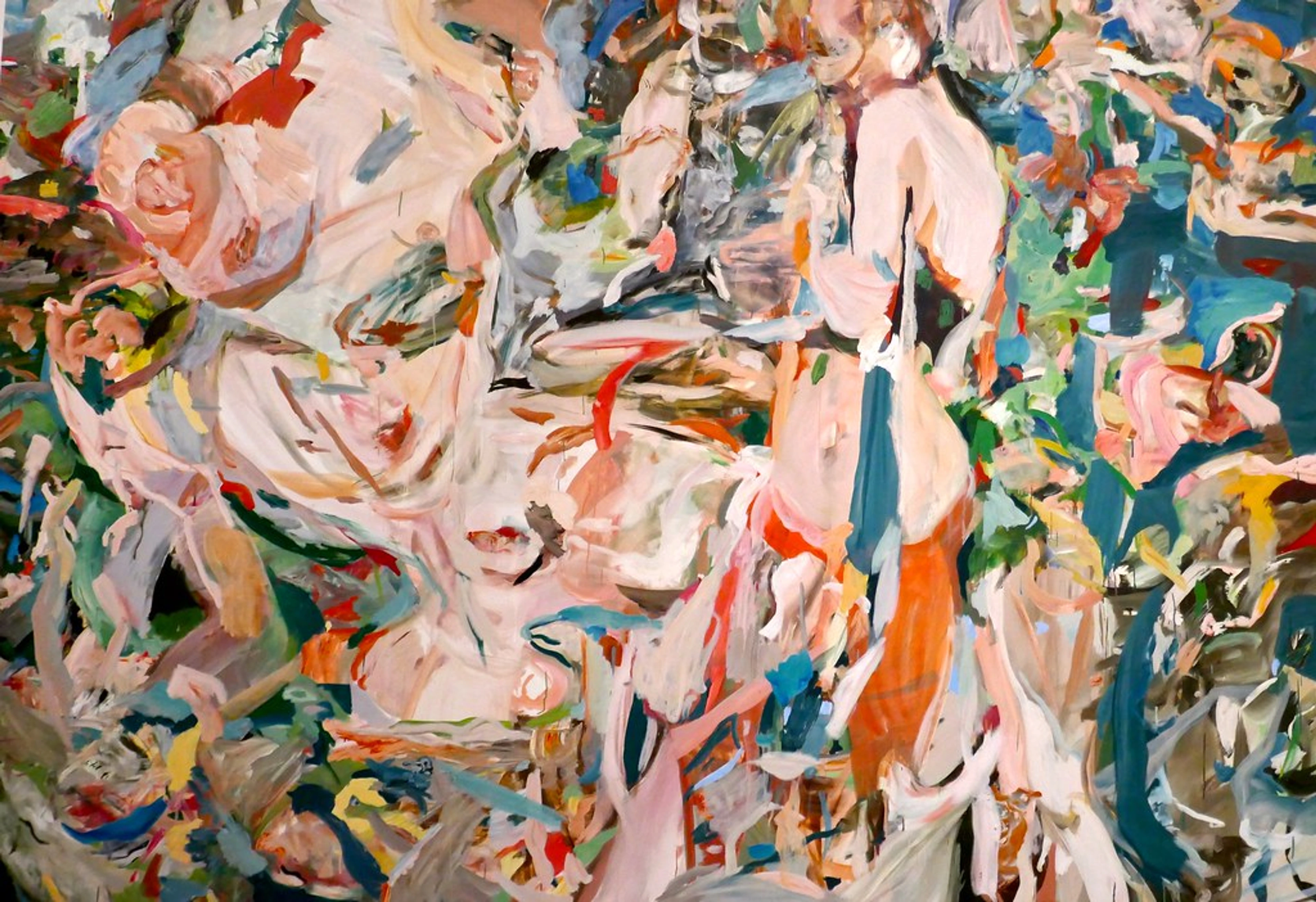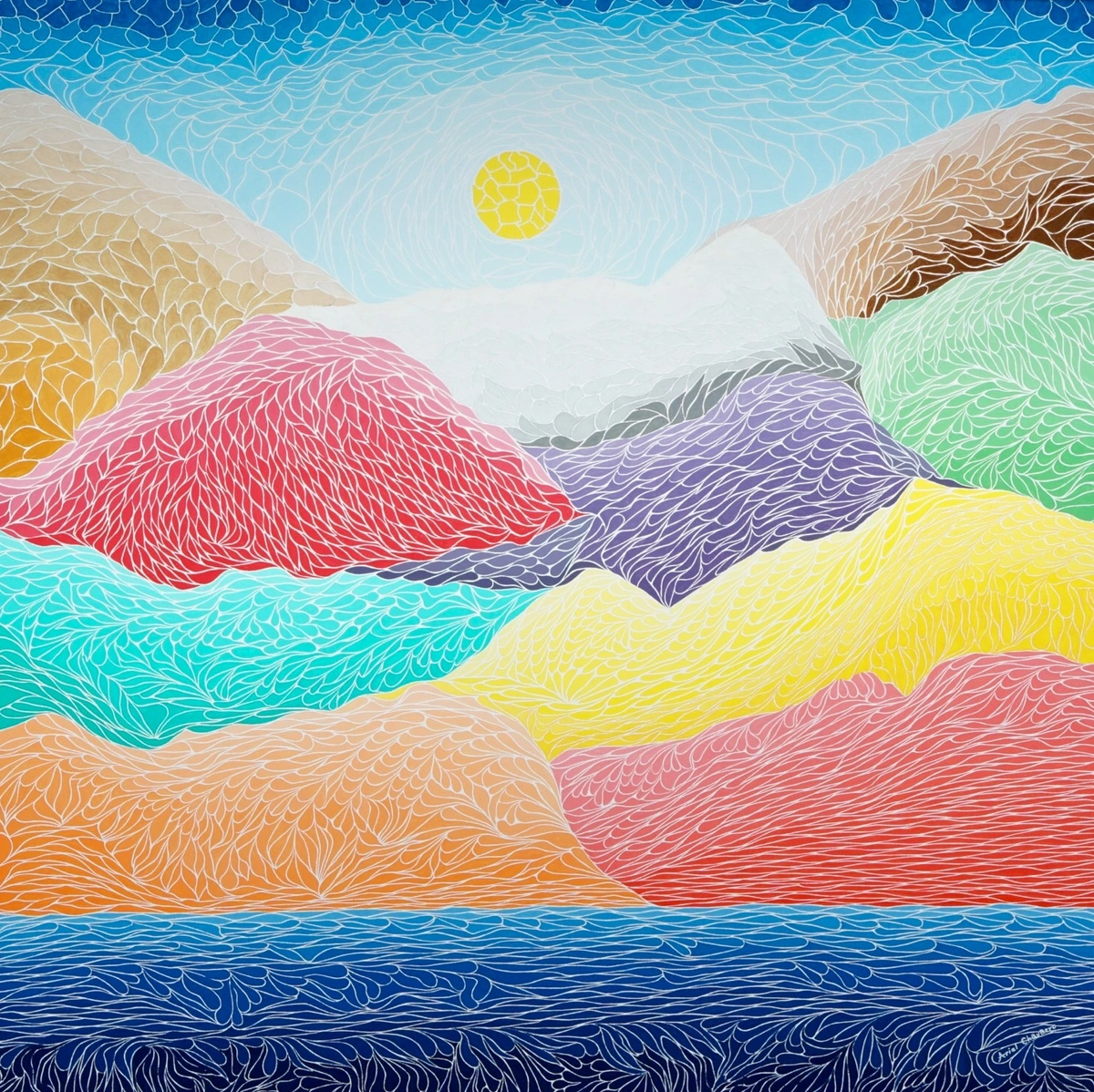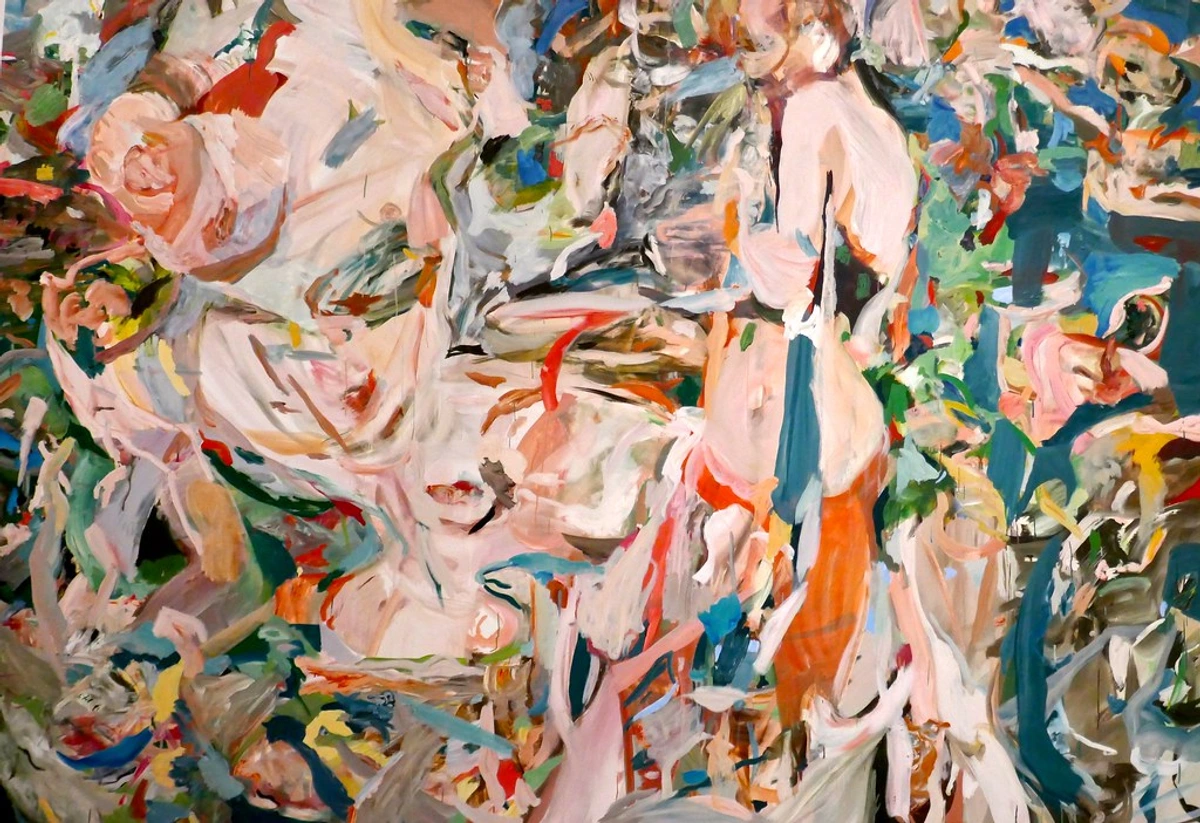
Joan Mitchell: Untamed Soul, Unforgettable Canvas – My Journey with an Abstract Expressionist Icon
Dive into Joan Mitchell's powerful Abstract Expressionist art. Explore her life, untamed emotion, unique gestural painting, and profound impact as a female pioneer.
Joan Mitchell: Untamed Soul, Unforgettable Canvas – My Personal Journey with an Abstract Expressionist Icon
Sometimes, a work of art doesn't just catch your eye; it seizes your very breath, leaving an indelible mark on your soul. For me, Joan Mitchell's canvases do precisely that. They don't merely hang there, passive and silent; they breathe, they shout, they pulsate with a raw, untamed energy that feels both deeply personal and astonishingly universal. You might gaze at her riot of color and brushstrokes, and a valid question might surface: 'What am I even supposed to be seeing?' Honestly, I've had that exact bewildered thought countless times myself, especially when first grappling with abstract art.
But with Mitchell, that initial bewilderment quickly melts into a profound feeling, an undeniable resonance that bypasses intellect and goes straight for the gut. It's less about literal interpretation and more about connecting with a primal, visceral experience. This guide isn't just a historical overview; it's an exploration into why Mitchell's abstract expressionism continues to speak so powerfully, delving into her unique approach to emotion and color, her uncompromising spirit, and how her untamed vision forged an undeniable path in art history. As an artist, I often find myself reflecting on my own journey – the frustrating dead ends, the exhilarating breakthroughs, and the constant, sometimes messy, search for a unique voice. Looking at Mitchell's fierce dedication and raw expression, I'm reminded that art isn't always about neat narratives or perfect lines; sometimes, it's about channeling something authentic, chaotic, and gloriously untamed. It's about letting the paint itself tell the story. So, let's peel back the layers and dive into the world of Joan Mitchell, a woman who truly mastered the art of translating her deepest, most potent feelings onto canvas.

A Painter's Spirit: Early Life and the Road to Abstraction
Born in Chicago in 1925, Joan Mitchell was, by all accounts, a force of nature from day one. She didn't just participate; she excelled, whether it was competitive swimming, ice skating, or eventually, painting. This inherent drive, this almost restless energy and uncompromising will, feels like the bedrock of her artistic spirit, palpable in the monumental scale and intense physicality of her later works. Sometimes I wonder if my own aversion to strict routines and my love for spontaneous, often unplanned, creation stems from a similar, albeit far less competitively charged, inner hum. Perhaps it's just a shared human inclination to push against the tidy edges of expectation.
Her early training at the Art Institute of Chicago and later in New York City exposed her to both traditional academic methods and the burgeoning avant-garde. But it was in the bustling, post-war art scene of New York that she truly found her artistic kin. Rubbing shoulders with giants like Willem de Kooning and Franz Kline, Mitchell quickly carved out her own fiercely independent space in the male-dominated world of Abstract Expressionism. This wasn't just about being present; it was about asserting her unique, often explosive, vision within a movement that, for all its championing of individual expression, often struggled to fully embrace its female pioneers. She had to fight harder to be seen, to have her voice heard in a scene brimming with larger-than-life male personalities, often navigating a critical landscape that was quicker to laud her male counterparts. Yet, with an unwavering tenacity, she carved out her undeniable place. While she absorbed the gestural freedom of her peers, she pushed beyond, infusing her work with an emotional resonance that felt deeply personal, almost like a coded diary of her internal world, her psyche splashed onto canvas. Talk about finding your voice! It makes me think about the winding path I've taken in developing my unique artistic style, and how crucial it is to surround yourself with inspiration, even if it's just from afar, perhaps from old masters who whisper lessons across centuries.
The Brush as a Voice: Decoding Mitchell's Abstract Expressionism
So, what exactly makes a Joan Mitchell a Joan Mitchell? It's not just the scale, which is often monumental, drawing you in like a vast, unfolding landscape. It's the way she wielded her brush, transforming paint into a raw conduit for emotion, memory, and experience. Her works are a masterclass in gestural painting – bold, sweeping strokes, often layered and scraped, that convey an incredible sense of movement, vitality, and sometimes, barely contained fury. The paint itself isn't merely color; it's a tangible record of her physical and emotional engagement with the canvas, an outpouring of her inner world – memories, feelings, and the tumultuousness of life – rendered with unflinching honesty. She once famously said, "I want to get to a certain feeling, and the painting has to do it." This focus on capturing a feeling rather than a literal image is key.
Mitchell's process was intensely physical and intuitive. She worked on large canvases, often pinning them to the wall or floor, building up layers of paint with energetic, gestural strokes. Her approach was spontaneous yet deeply considered, drawing from internal feelings and memories rather than direct observation, letting it evolve organically over days or weeks. This undeniable force and speed often resulted in thick impasto, drips, and expressive strokes, turning the surface into a vibrant battlefield of texture and pigment. Imagine trying to paint a raging river or a quiet memory without depicting either, but rather pouring the sensation of them onto the canvas – that was Mitchell's genius.
When I first started exploring abstract art more deeply, I admit I sometimes felt a bit lost. I yearned to understand the 'meaning' in a literal sense. But Mitchell's work taught me to feel rather than just think. This is where the magic happens – the sheer scale of her canvases, often enveloping you, combined with the raw, untamed force of her brushwork and the surprising, sometimes clashing, use of color, creates a direct line to your own subconscious. You don't just see a painting; you experience it, a symphony of movement and emotion that bypasses intellect and goes straight for the gut. Her paintings are like emotional diaries, where a vibrant yellow might scream of sunshine and joy, or perhaps a searing memory of loss, while deep blues and purples might plunge into melancholy or the cool shadows of a forest. She famously said, "I carry my landscapes around with me," and you can absolutely sense that. Each canvas feels like a condensed memory, a storm of sensation captured at its peak.
Her use of color is particularly captivating. It's not always harmonious in a conventional sense; sometimes, colors clash and fight, creating tension that vibrates across the surface like an argument or an explosion. Other times, they blend and dance, evoking serene light or the softness of a cloud, a quiet breath. This emotional complexity is what makes her work so enduring and deeply human. For example, her iconic painting Sunflower (1972), part of a series inspired by the flower, combines intense, almost frenetic yellows and greens with gestural energy, not depicting a sunflower literally, but embodying its vibrant, fleeting essence. The riot of yellow and green isn't just a depiction; it's the feeling of summer's peak, the almost overwhelming energy of life pushing through, expressed in thick, sweeping impasto that pulses with warmth and vitality. It's not unlike how my own approach to color often goes beyond the primary to create a richer, more nuanced world on canvas. While abstract, her paintings often echo natural forms, light, and atmosphere, reflecting her deep connection to the environment and internalizing it rather than directly depicting it. She didn't paint what she saw; she painted what she felt about what she saw, distilling the essence of a landscape into pure, untamed emotion on canvas. It's like she took the memory of a place, shook it up, and then splashed it out, drips and all.
This unique language allowed her to bridge the raw energy of the New York School with the more nuanced, atmospheric traditions of European landscape painting. Instead of seeking to capture transient light effects like Monet, or the geometric structure of Cézanne's landscapes, Mitchell absorbed the sensation of these environments, filtering them through her intensely personal, expressionistic lens. She forged something entirely her own, a testament to her genius in blending seemingly disparate artistic influences into a singular, powerful statement. What feelings does her work stir in you?
Paris and Poetic Landscapes: Mitchell's French Years
In 1959, Mitchell moved to France, eventually settling in Vétheuil, a quiet village northwest of Paris, a place famously once home to Claude Monet. This move marked a significant, yet subtle, shift in her work. While she never abandoned abstraction for representation, her proximity to the natural world – the gardens, the Seine, the changing light, the specific vegetation – profoundly influenced her palette and compositions. She immersed herself in what she called "the sensation of landscape." Unlike Monet, who sought to capture fleeting moments of light and color with meticulous observation, Mitchell absorbed the essence of her surroundings, filtering them through her intensely emotional lens. The dappled light of the French countryside, the specific greens of its foliage, or the reflections on the Seine became less about visual accuracy and more about internalized sensory experience, expressed through rhythmic brushstrokes and a more nuanced, yet still vibrant, color palette. Her work during this period, particularly as she battled health issues later in life, often carried an intensified rawness, a poignant vulnerability that only deepened its emotional power.
I can relate to the profound impact a change of scenery can have on creative output. My own experiences, whether visiting a vibrant city or finding peace in nature, inevitably seep into my work, reshaping my palette or inspiring new forms. For Mitchell, it wasn't just about the physical environment; her move also coincided with significant personal relationships and challenges that, though deeply private, undoubtedly fueled the emotional intensity of her work, transforming personal turmoil into breathtaking visual poetry. Mitchell's French paintings, often bursting with greens, blues, and earth tones, but also punctuated by vibrant yellows and reds, feel more expansive, perhaps even more introspective, carrying the echoes of the French countryside's light and atmosphere. It's as if the expansive landscapes allowed her own emotional landscapes to unfurl even more freely. Series like "La Grande Vallée" from this period are prime examples of this deep, almost spiritual, connection to her environment, rendered with breathtaking emotional depth. Though her physical distance from New York meant less immediate exposure in the American art market, her artistic output never wavered in its intensity or originality, and critical appreciation for her unique contribution only grew over time. How do you think your surroundings influence your creative spirit?

A Legacy of Raw Emotion: Mitchell's Enduring Impact
Joan Mitchell was not just a participant in Abstract Expressionism; she was one of its most important, and often overlooked, pioneers. Her refusal to conform to societal expectations or artistic trends, coupled with her uncompromising dedication to her vision, cemented her place as a major figure in 20th-century art. In a movement where women artists often struggled for recognition equal to their male counterparts – figures like Helen Frankenthaler and Lee Krasner also carved out significant spaces – Mitchell forged an undeniable legacy through sheer force of talent and will. Her influence on subsequent generations, particularly female artists embracing abstraction and bold expression, is immense. She demonstrated that paint itself, through texture, color, and gesture, can carry immense psychological weight and emotional depth, offering a profound, wordless language for the human experience.
Her work continues to inspire countless contemporary artists, myself included, who seek to express the inexpressible through abstraction. She demonstrated that paint itself, through texture, color, and gesture, can carry immense psychological weight and emotional depth. It reminds me that my own work, whether it's an abstract print or an original painting, is always an extension of my internal world, and hopefully, resonates with yours. It's about taking that chaotic internal landscape and giving it form, a bit like trying to corral a storm cloud into a bottle – often messy, but always exhilarating. I hope a piece of that raw honesty, that untamed spirit, can be found in my own artistic journey.
What aspects of Mitchell's legacy resonate most with your own understanding of art?

Iconic Works to Discover
If you're ready to dive deeper into Joan Mitchell's world, here are a few iconic works that exemplify her artistic power and emotional range:
- City Landscape (1955): An early, powerful example of her urban-inspired Abstract Expressionism, showcasing vigorous brushwork and a dynamic sense of space. It captures the raw energy and frenetic pace of metropolitan life, a vibrant explosion of form and color that marked her arrival as a major voice.
- Sunflower (1972): Part of a series inspired by the flower, this painting combines intense color with gestural energy, demonstrating her continued engagement with nature's forms through an abstract lens. It exemplifies her ability to evoke the essence of nature, not its literal appearance, through a powerful, almost ecstatic, application of paint.
- La Grande Vallée (The Large Valley) Series (1983-84): A celebrated series of monumental canvases created in France, reflecting her profound connection to the Vétheuil landscape with a rich, complex palette and expansive compositions. These works are a testament to her deep emotional connection to the French countryside, translating its light, atmosphere, and personal memories into vast, enveloping abstracts.
- August (1976): Often characterized by its vibrant yellows and blues, this work captures a specific seasonal mood and memory with incredible expressive force. A quintessential example of her later work, its vibrant palette and dynamic composition convey the intense sensory experience of a late summer day.
- Plowing (1971): This piece reveals her connection to the agricultural landscape, with powerful, sweeping strokes suggesting the movement and effort of cultivation, yet remaining entirely abstract. It powerfully demonstrates how she channeled specific physical and emotional sensations, like the rhythmic force of plowing, into abstract form, merging her inner world with the external landscape.
Frequently Asked Questions about Joan Mitchell
Let's tackle some common questions about this extraordinary artist:
- Who was Joan Mitchell? Joan Mitchell (1925–1992) was an American painter who became a leading figure in the Abstract Expressionist movement, known for her large, gestural, and highly emotive abstract canvases.
- What is Joan Mitchell known for? She is renowned for her vigorous brushwork, sophisticated use of color, and her ability to evoke landscapes, nature, and personal emotions without direct representation. Her work often bridged the New York School's energy with European landscape traditions, especially during her time in France.
- What was Joan Mitchell's artistic process like? Mitchell's process was intensely physical and intuitive. She worked on large canvases, often pinning them to the wall or floor, building up layers of paint with energetic, gestural strokes. Her approach was spontaneous yet deeply considered, drawing from internal feelings and memories rather than direct observation, often returning to a painting over days or weeks, letting it evolve organically.
- What was Joan Mitchell's artistic philosophy? Mitchell believed in painting from an internal, emotional place, using memory and sensation rather than direct observation. She sought to express "the sensation of landscape" and the raw truth of her experiences through color and gesture, aiming for honesty and intensity over narrative or symbolic meaning. For her, the act of painting was a deeply personal, almost primal, dialogue with the canvas.
- What is Joan Mitchell's lasting legacy? Mitchell's legacy is defined by her uncompromising contribution to Abstract Expressionism, her powerful representation of the female voice in a male-dominated movement, and her enduring influence on subsequent generations of artists. She proved the profound emotional and psychological depth achievable through abstraction, challenging viewers to engage with art on a visceral, feeling-based level.
- Where can I see Joan Mitchell's work? Her paintings are held in major museum collections worldwide, including the Museum of Modern Art (MoMA) and the Whitney Museum of American Art in New York, the Art Institute of Chicago, Tate Modern in London, and the Centre Pompidou in Paris.
Conclusion: The Echo of an Untamed Heart
Joan Mitchell's art is a testament to the power of pure expression, an unwavering commitment to inner truth. It challenges us to look beyond the surface, to connect with the raw, untamed energy that resides within us all. Her legacy isn't just a collection of magnificent paintings; it's a profound reminder that true artistic freedom comes from an unwavering commitment to one's inner voice, no matter how chaotic or serene it may be. It's about having the courage to splash your soul onto the canvas, unapologetically, and perhaps even leave a little piece of that wildness for others to discover, like a secret message across time, a whisper of a shared, powerful human experience.
As an artist myself, exploring her work always feels like a refresher course in authenticity. It reminds me to trust my instincts, to let the paint speak, and to embrace the emotional journey of creation. If her story has sparked something in you, I encourage you to explore her works further, perhaps by visiting one of the museums where her powerful canvases reside, or even delving into contemporary abstract pieces that, in their own way, try to capture a fraction of that untamed spirit – much like I strive to do with the abstract art and prints available on my site.




